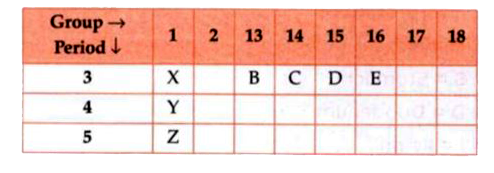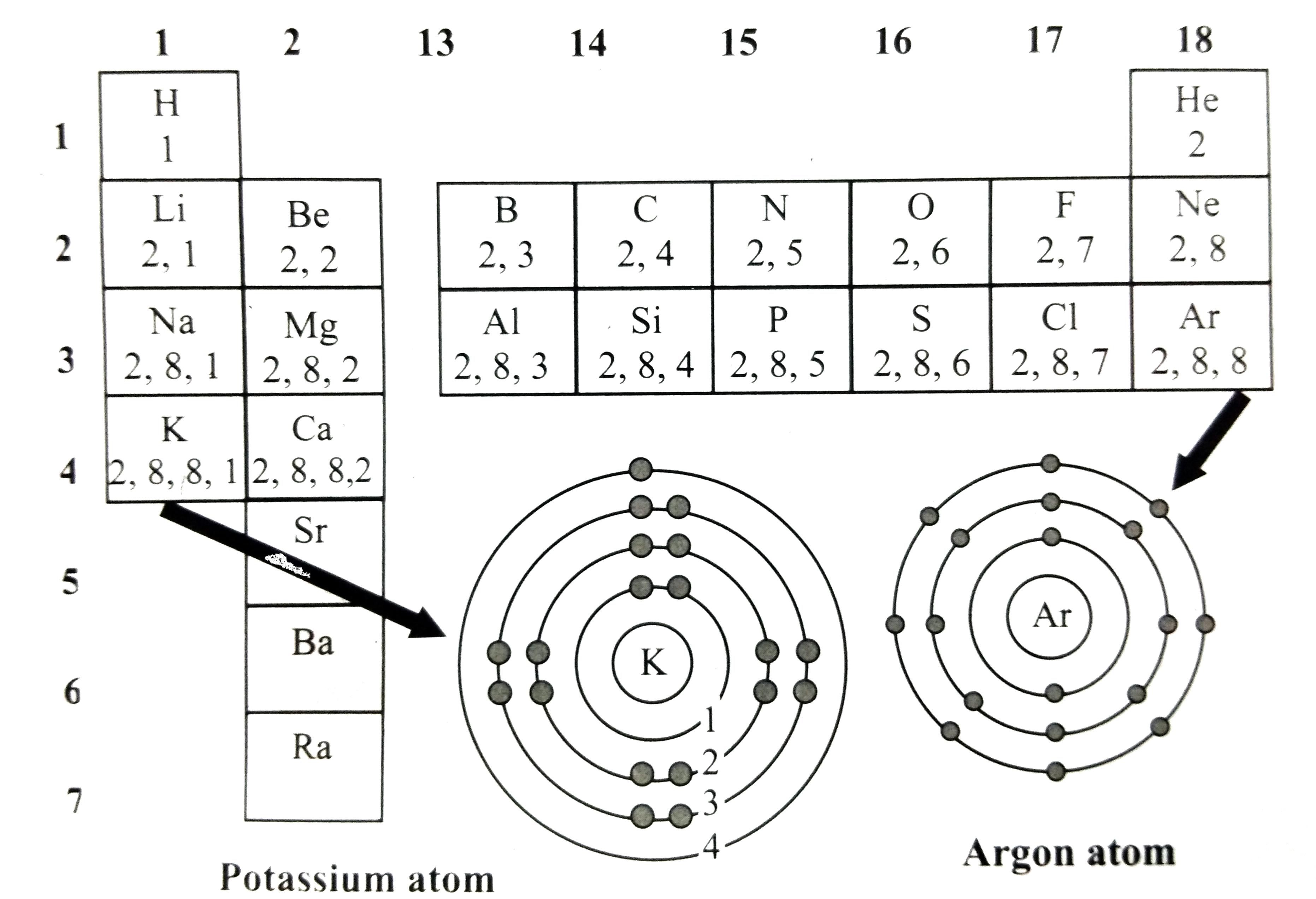Consider an element 1531X and answer the following questions
What is its electronic configuration?
To determine the electronic configuration of the element with atomic number 15 and mass number 31, we can follow these steps:
Step 1: Identify the number of electrons
The atomic number of the element is 15. This means it has 15 protons and, in a neutral atom, it will also have 15 electrons.
Step 2: Fill the electron shells
We fill the electron shells according to the maximum capacity of each shell:
- The K shell can hold a maximum of 2 electrons.
- The L shell can hold a maximum of 8 electrons.
- The M shell can hold a maximum of 18 electrons, but we will only fill it with the number of electrons we have left after filling K and L.
Step 3: Distribute the electrons
1. Fill the K shell:
- K shell: 2 electrons (2 total)
2. Fill the L shell:
- L shell: 8 electrons (2 + 8 = 10 total)
3. Fill the M shell:
- We have 15 - 10 = 5 electrons remaining.
- M shell: 5 electrons (10 + 5 = 15 total)
Step 4: Write the electronic configuration
Now we can represent the electronic configuration in two ways:
1. Shell notation:
- K: 2
- L: 8
- M: 5
- Therefore, the electronic configuration in shell notation is: 2, 8, 5.
2. Subshell notation:
- 1s² (2 electrons in the 1s subshell)
- 2s² (2 electrons in the 2s subshell)
- 2p⁶ (6 electrons in the 2p subshell)
- 3s² (2 electrons in the 3s subshell)
- 3p³ (3 electrons in the 3p subshell)
- Therefore, the electronic configuration in subshell notation is: 1s² 2s² 2p⁶ 3s² 3p³.
Final Answer
The electronic configuration of the element with atomic number 15 is:
- Shell notation: 2, 8, 5
- Subshell notation: 1s² 2s² 2p⁶ 3s² 3p³
---
The atomic number of the element is 15. This means it has 15 protons and, in a neutral atom, it will also have 15 electrons.
We fill the electron shells according to the maximum capacity of each shell:
- The K shell can hold a maximum of 2 electrons.
- The L shell can hold a maximum of 8 electrons.
- The M shell can hold a maximum of 18 electrons, but we will only fill it with the number of electrons we have left after filling K and L.
1. Fill the K shell:
- K shell: 2 electrons (2 total)
2. Fill the L shell:
- L shell: 8 electrons (2 + 8 = 10 total)
3. Fill the M shell:
- We have 15 - 10 = 5 electrons remaining.
- M shell: 5 electrons (10 + 5 = 15 total)
Now we can represent the electronic configuration in two ways:
- K: 2
- L: 8
- M: 5
- Therefore, the electronic configuration in shell notation is: 2, 8, 5.
- 1s² (2 electrons in the 1s subshell)
- 2s² (2 electrons in the 2s subshell)
- 2p⁶ (6 electrons in the 2p subshell)
- 3s² (2 electrons in the 3s subshell)
- 3p³ (3 electrons in the 3p subshell)
- Therefore, the electronic configuration in subshell notation is: 1s² 2s² 2p⁶ 3s² 3p³.
The electronic configuration of the element with atomic number 15 is:
- Shell notation: 2, 8, 5
- Subshell notation: 1s² 2s² 2p⁶ 3s² 3p³
Topper's Solved these Questions
- PERIODIC CLASSIFICATION OF ELEMENTSBOOK - MTG IIT JEE FOUNDATIONCHAPTER - PERIODIC CLASSIFICATION OF ELEMENTSEXERCISE - NCERT Section
35 Videos
- PERIODIC CLASSIFICATION OF ELEMENTSBOOK - MTG IIT JEE FOUNDATIONCHAPTER - PERIODIC CLASSIFICATION OF ELEMENTSEXERCISE - Exercise (Multiple Choice Questions Level-1)
30 Videos
- PERIODIC CLASSIFICATION OF ELEMENTSBOOK - MTG IIT JEE FOUNDATIONCHAPTER - PERIODIC CLASSIFICATION OF ELEMENTSEXERCISE - Olympiad/HOTS Corner
15 Videos
- MOLE CONCEPT, STOICHIOMETRY AND BEHAVIOUR OF GASES BOOK - MTG IIT JEE FOUNDATIONCHAPTER - MOLE CONCEPT, STOICHIOMETRY AND BEHAVIOUR OF GASES EXERCISE - EXERCISE (INTEGER/NUMERICAL VALUE TYPE)
5 Videos
Similar Questions
Knowledge Check

Write electronic configuration of element E.A2,8,3B2,8,6C2,8,5D2,8
Consider an element 1531X and answer the following questions
Is it a metal or a non-metal?
View SolutionConsider an element 1531X and answer the following questions
To which group does it belong?
View SolutionConsider an element 1531X and answer the following questions
How many electrons are there in its valence shell?
View Solution(i) Element X has two valence electrons in M-shell .
(ii) In element Y, the electrons are distributed in the first three shells. It has eight electrons in M-shell .
(iii) Element Z has eight electrons in the penultimate shell that is M.
Based on the information given in the above three statements, answer the following questions.
(a) Give the electronic configuration of X.
(b) Which element is stable among X, Y and Z and why ?
(c) In which atom of an element is the number of electrons distributed in all four shells ?
(d) What is the atomic number of Z in which the number of electrons in the first and the last shell are not the same ?
What are the number of electrons and protons present in 'Y' ?
View SolutionThe elements with electronic configuration (2,7)
View SolutionObserve the following diagram and write the answers of the following question

The diagram of electronic configuration of magnesium atom is as follows:
View SolutionThe atomic number of an element is 25.
Write its electronic configuration.
View Solution
